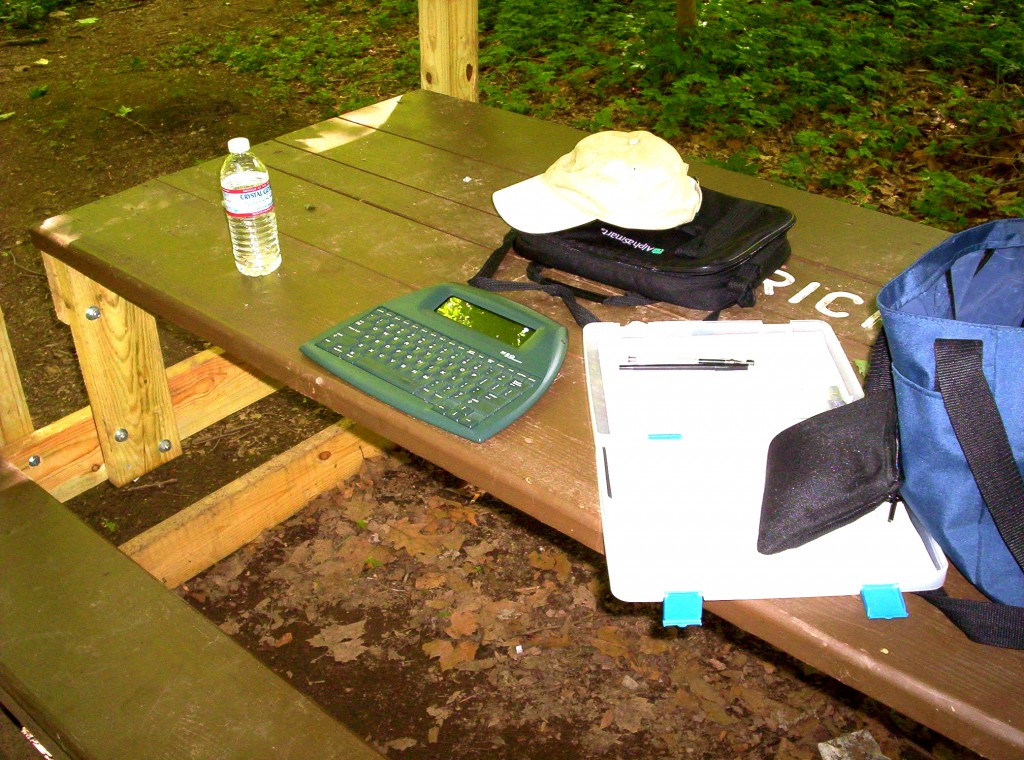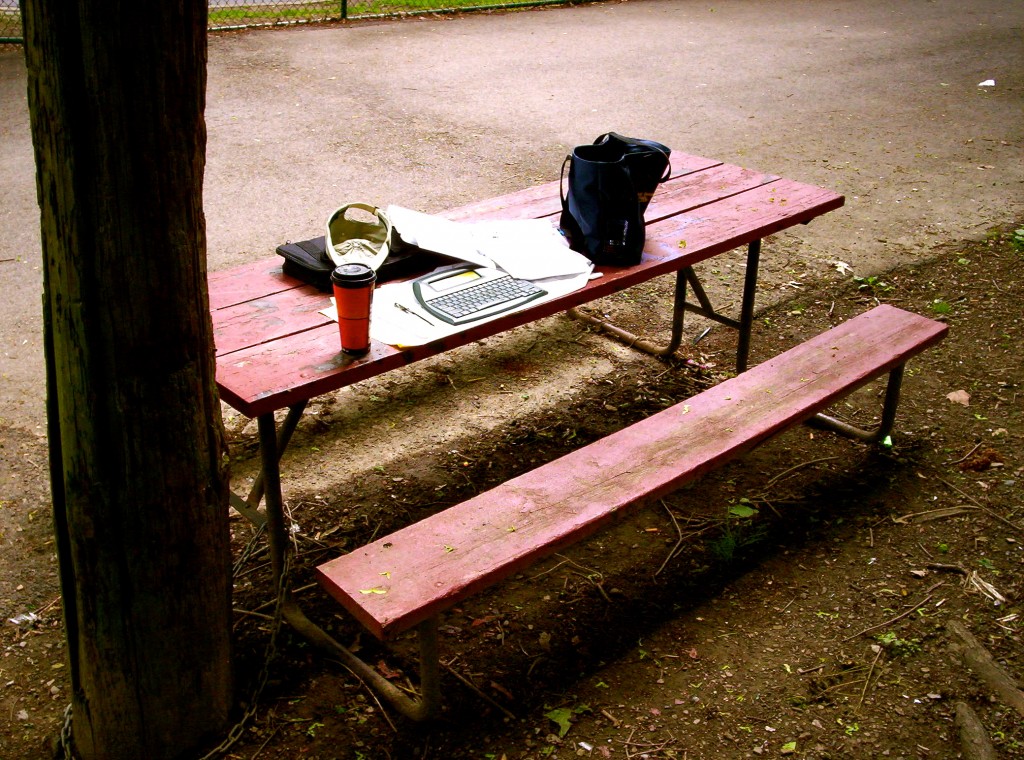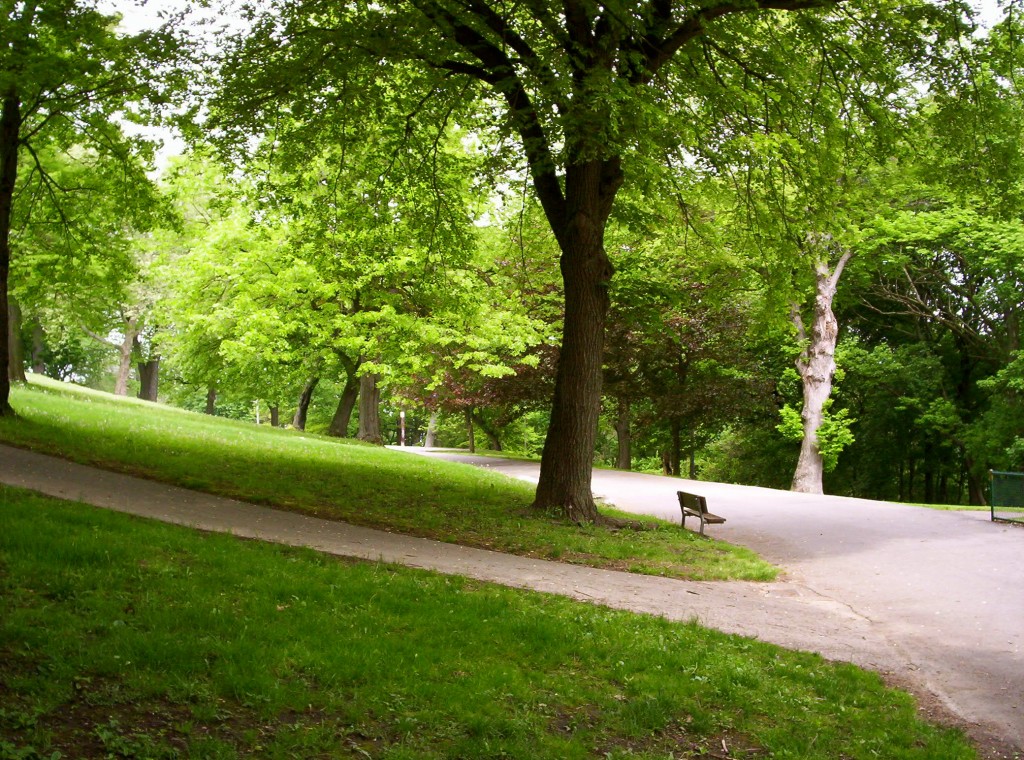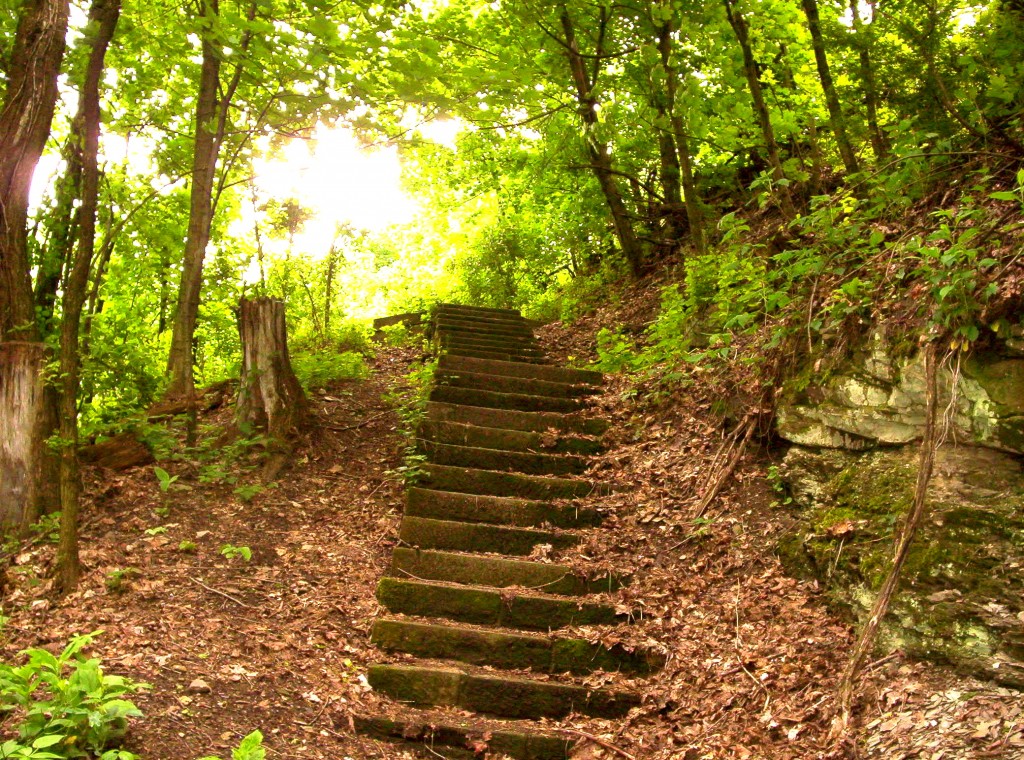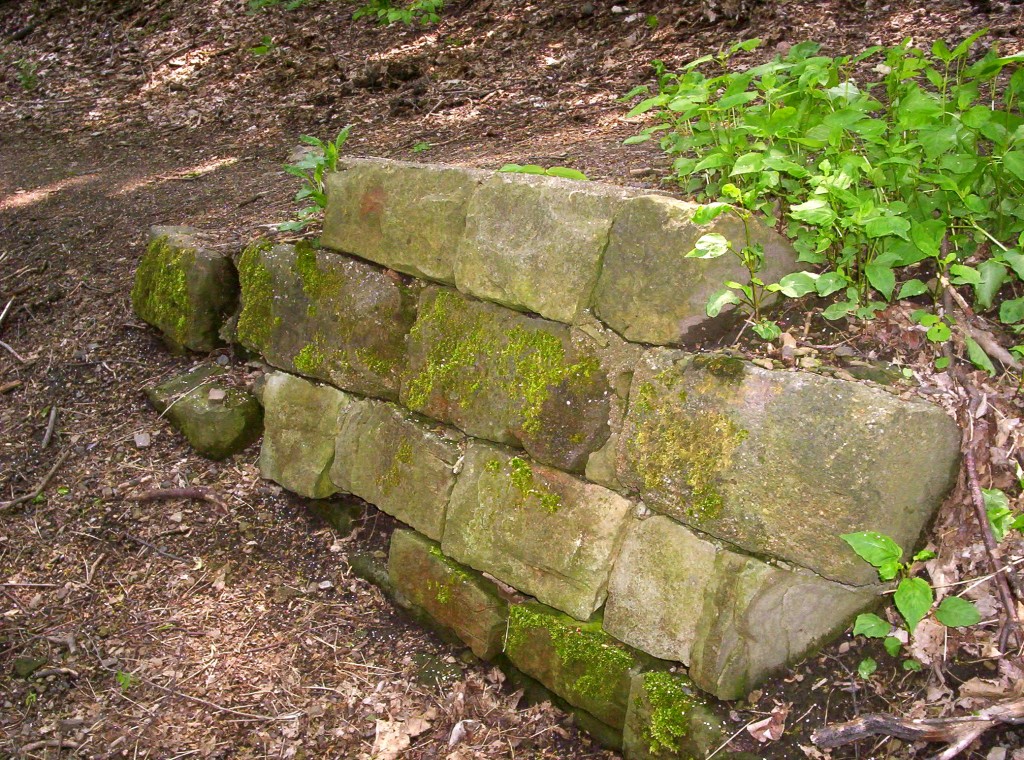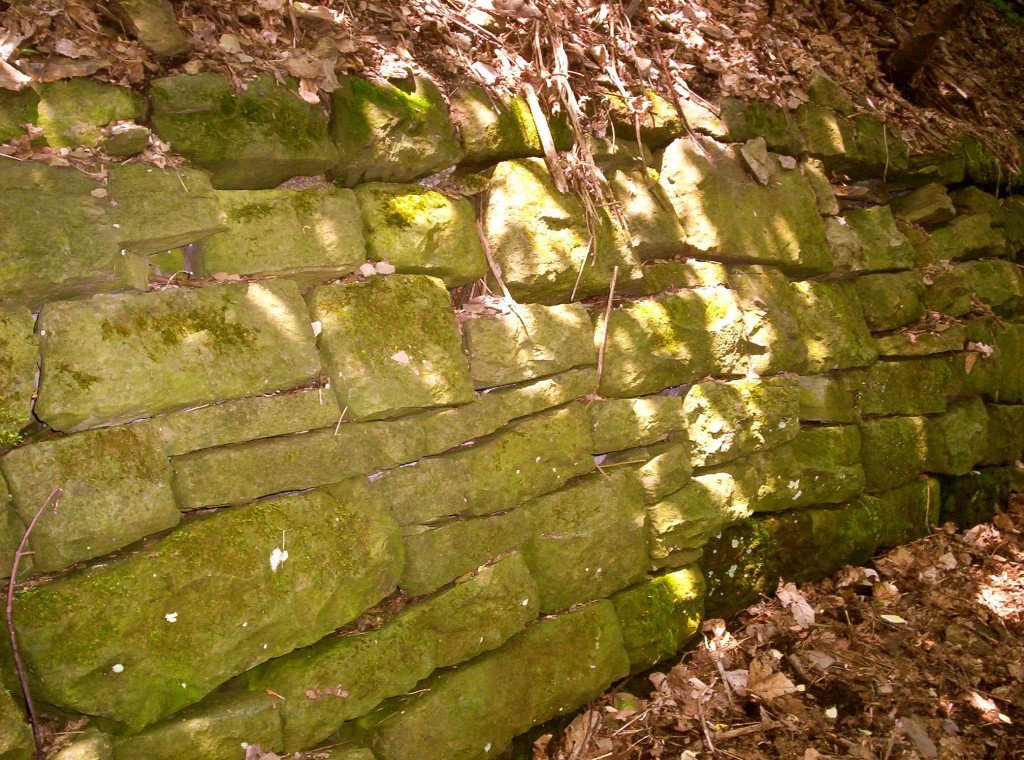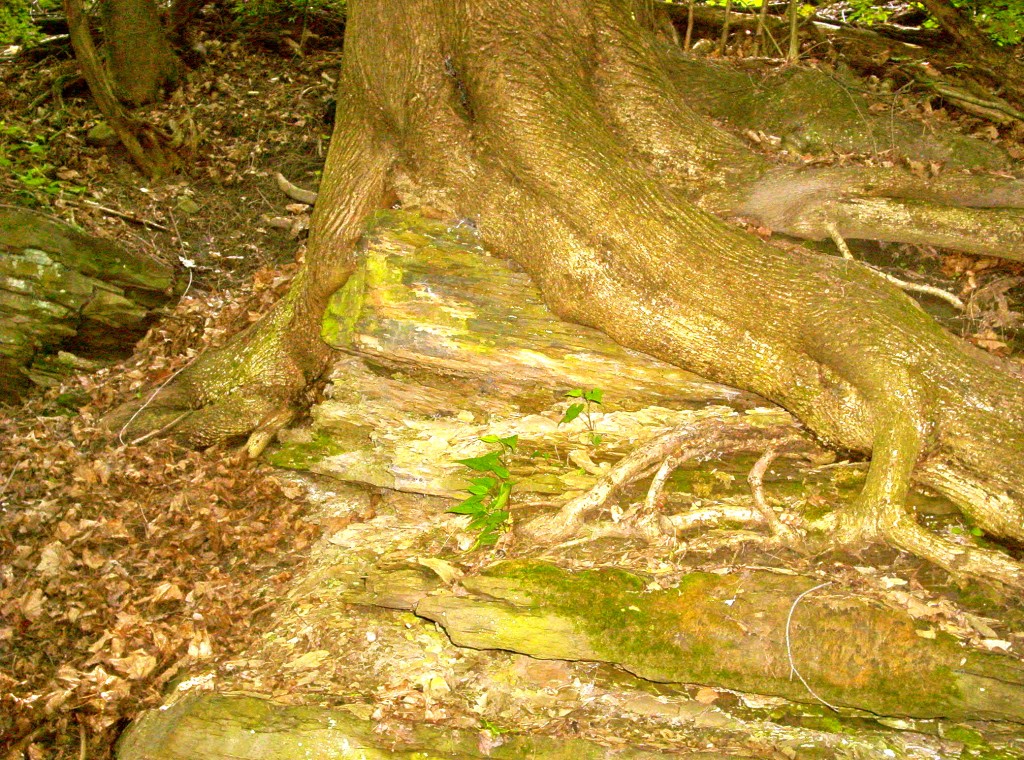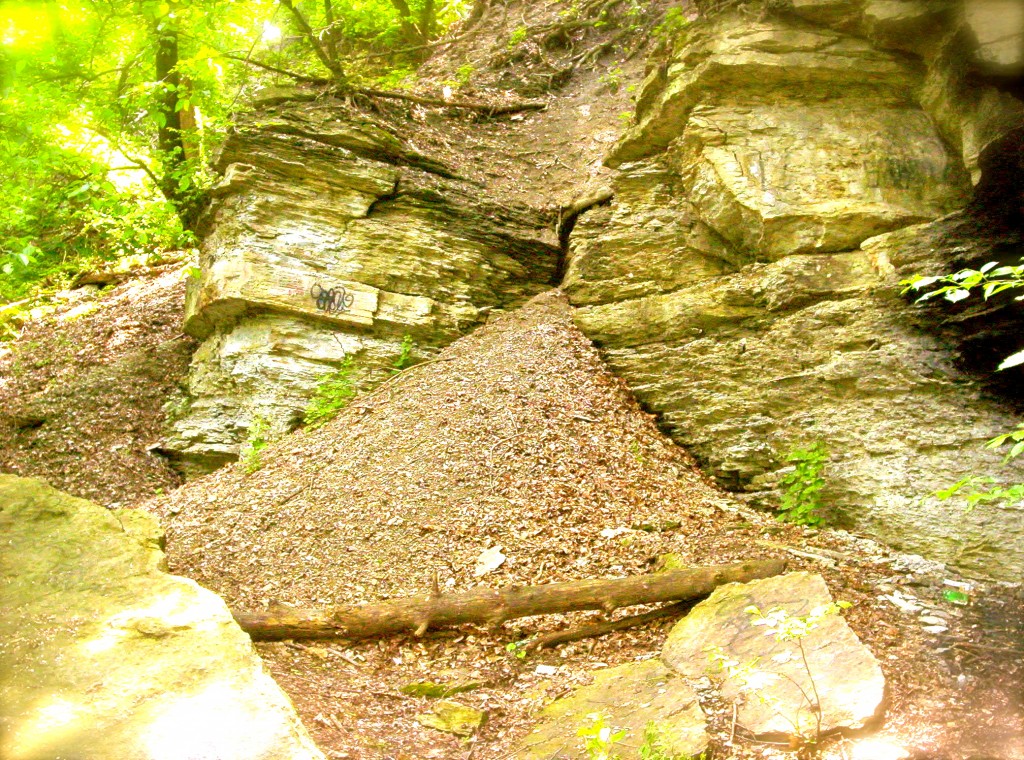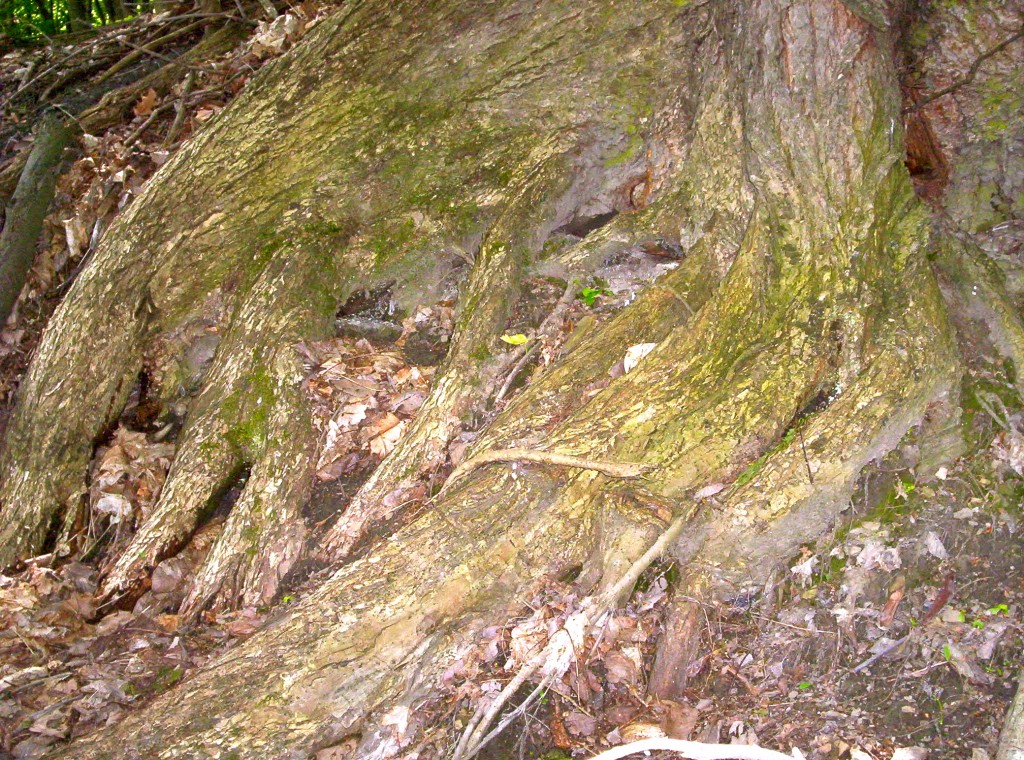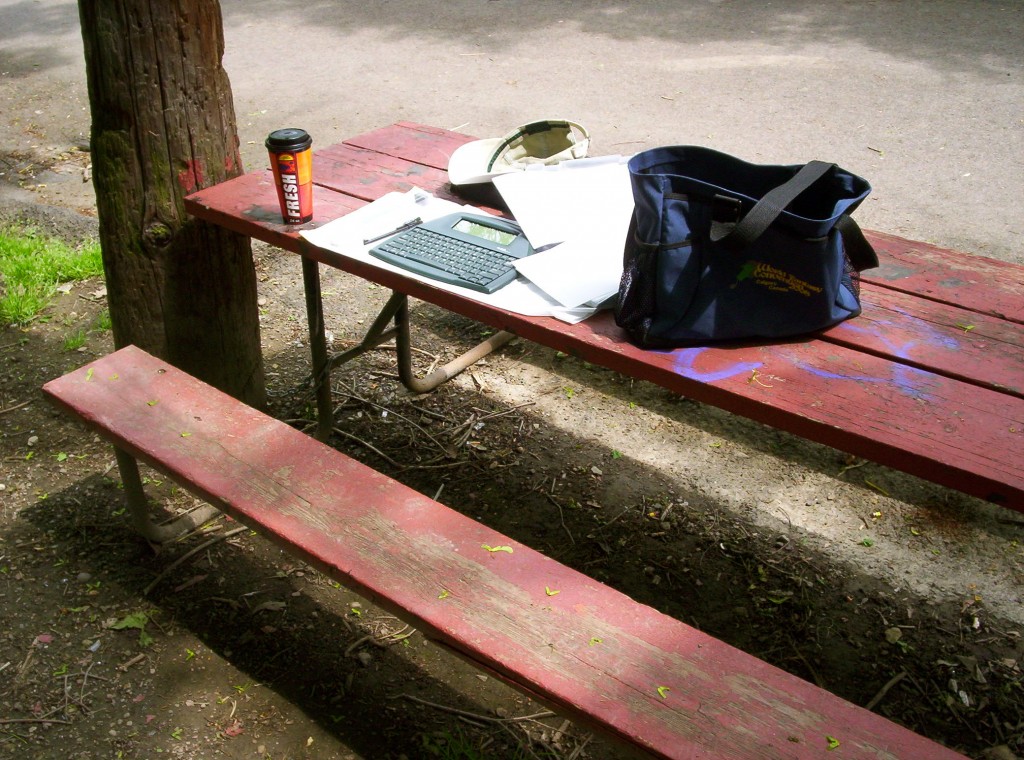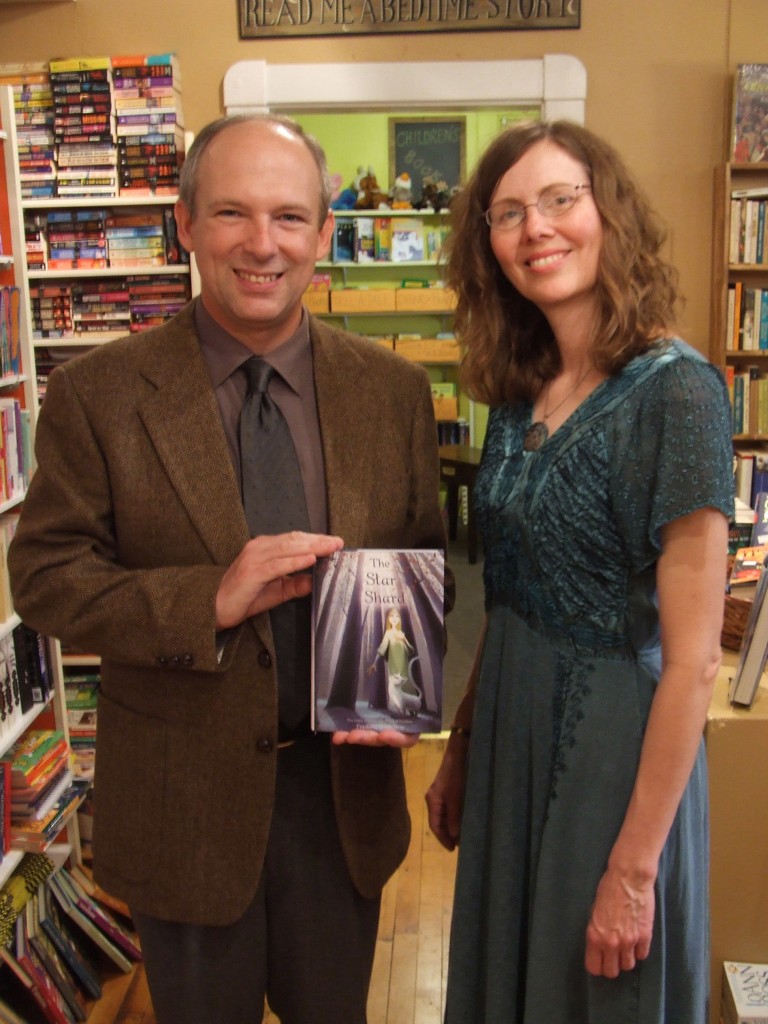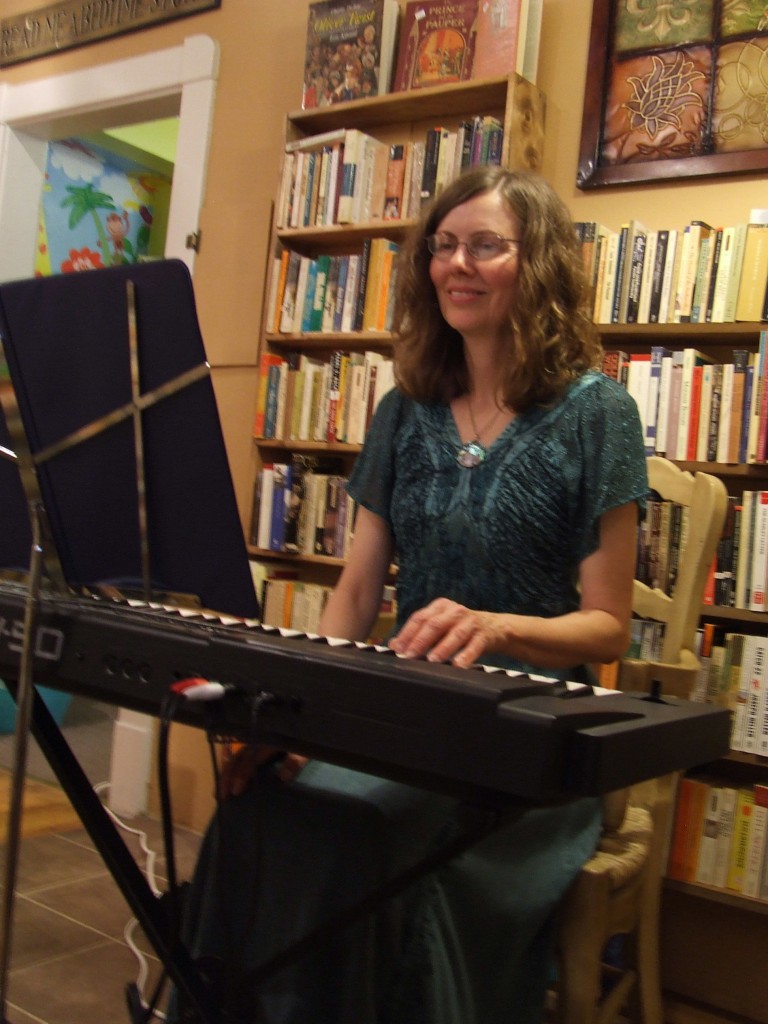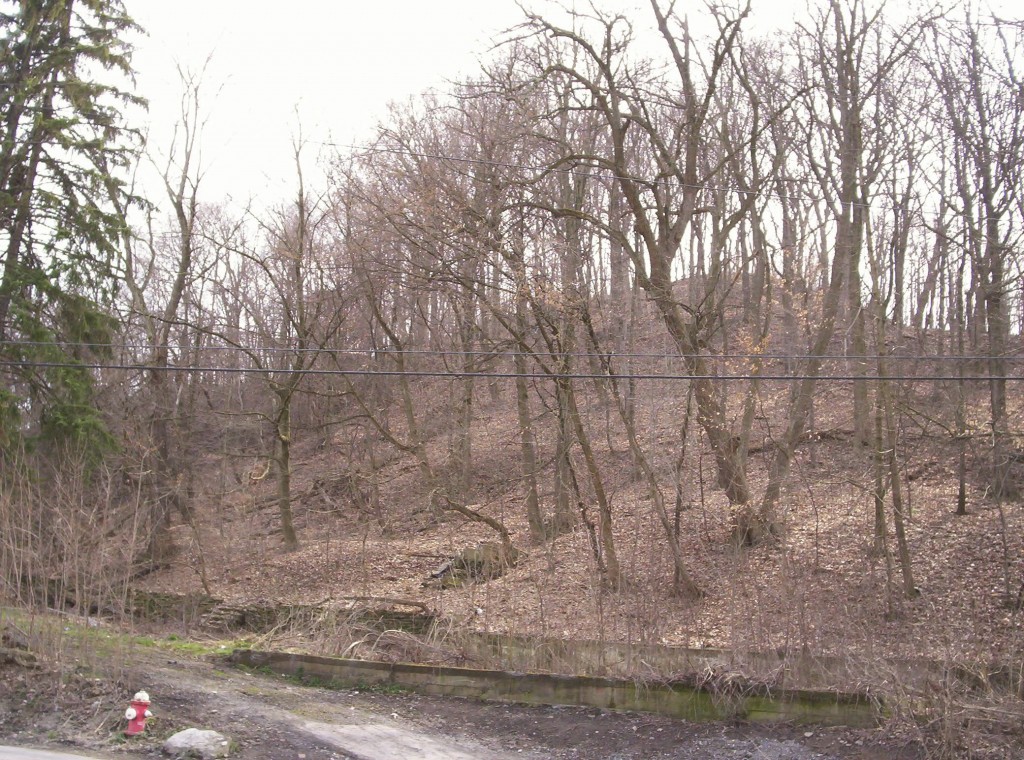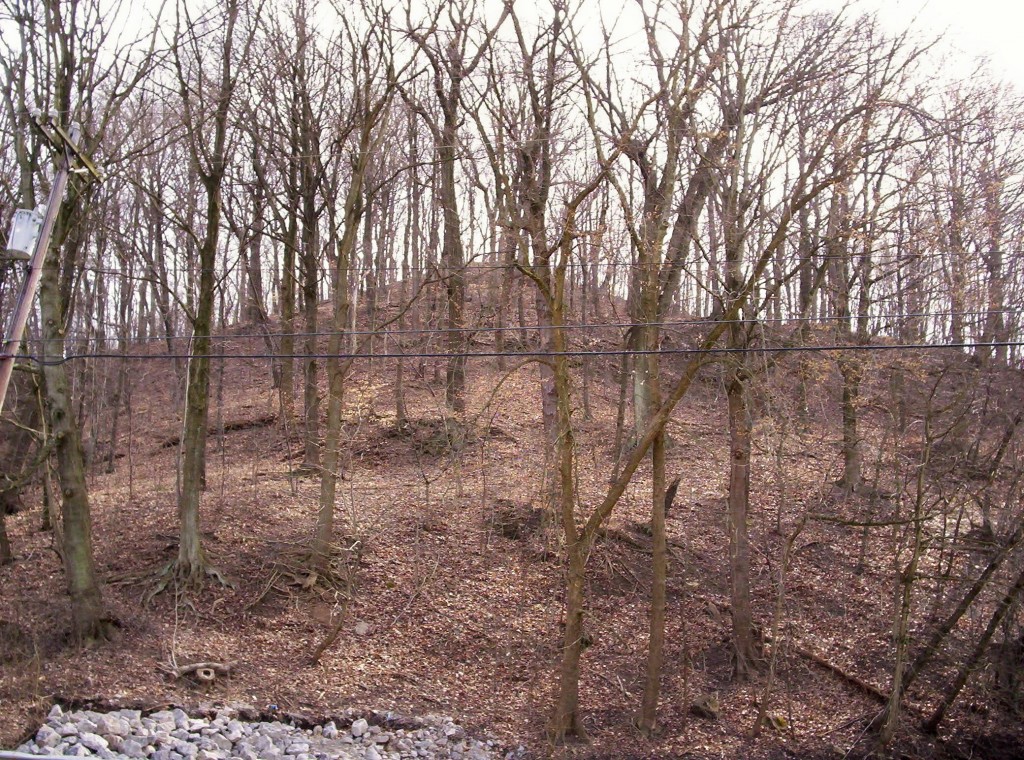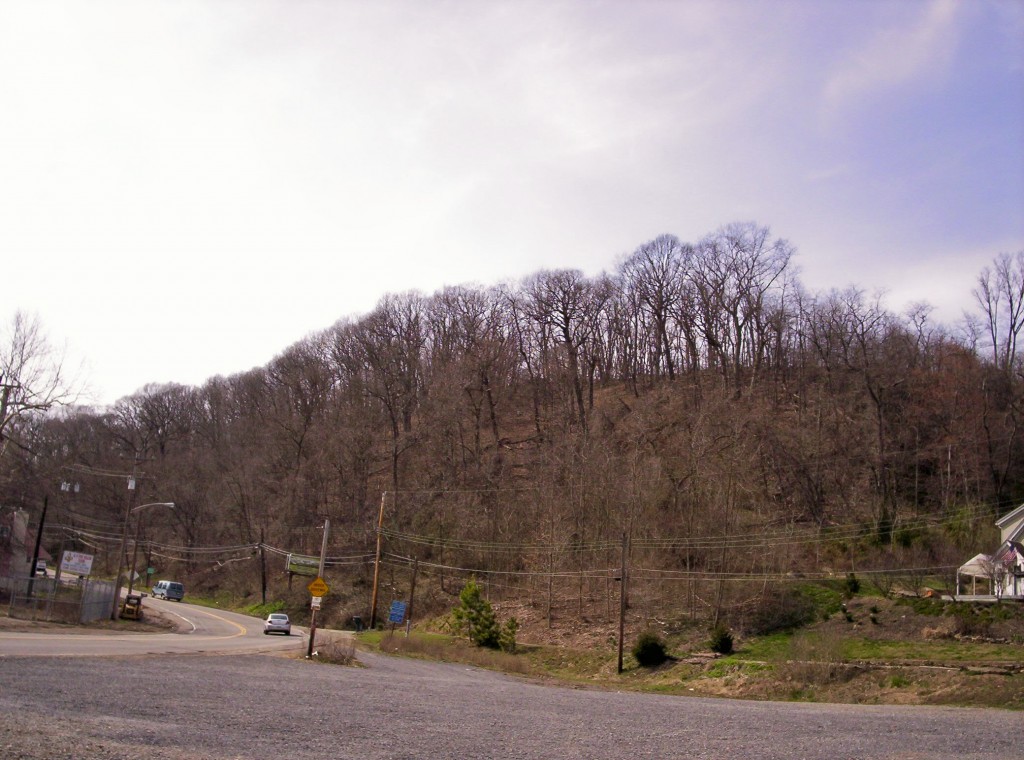So, I just finished my third day of work at Greenstar Recycling. The staffing boss took some convincing that I really wanted to try it. He warned me that the job would be “unpleasant”; he warned me that I would be working with “mostly felons” — many of the temp guys there have just gotten out of jail. I knew it would be dirty and gritty and minimum-wage.
I did not expect to fall in love with it. But that’s pretty much what’s happened. You may not believe me, but it’s absolutely true: I’m having a fantastic time! I’ll describe what my day is like, and maybe you’ll get an inkling of why it’s turned into another of those “shining moments” as mentioned in the last post.
I get up at around 5:15 a.m. Can you imagine that?! Me, FSD, getting up at that hour? Yes, my day has made an almost perfect flip. I wake up pretty close to what used to be my bedtime, and I go to bed (when I can) at 10:30 or 11:00 p.m. — which used to be when I thought the night was just getting started. I suppose it’s healthy, though, living more according to the patterns of the sun.
At that hour, my apartment is still pitch dark, though I can hear birds singing. I have an espresso-maker that friends gave me as a housewarming present, and they also gave me a giant cup that holds the whole pot, plus water to thin it out. There’s not a lot involved in getting ready. Why take a shower when you’re going to be working in a mountain of garbage? Why wash your hair when you’re going to be wearing a hardhat all day?
The hardhat . . . this is the first time I’ve ever worn one for a job, and I love it! I wear jeans, the typical Fred-type shirt, dusty steel-toed boots, a safety vest, earplugs (the machines are noisy), plastic safety glasses, and two pairs of gloves.
That’s two pairs, because sometimes I have to grab jagged metal or what turns out to be broken glass. I wear an inner pair of wool-like gloves (probably synthetic or cotton) and an outer pair that are rubberized and extremely tough.
And I wear the hardhat. An excellent trick I learned from watching what other guys do is to tie a bandana over the top of my head first. That keeps the hardhat firmly in place (my first day, it was always sliding down over my eyes). The bandana also serves to keep the earplugs in; otherwise, they’re constantly popping out. I got ordered by the foreman on Day 1 to put my earplugs in — they had come out and were dangling. The noise level isn’t that high, but the plugs reduce it, and I’m sure that’s better for the ears.
Those of you who know me know that I’ve always loved to be dirty. Of course I like being clean, too — but as a kid I was usually covered in Midwestern dust. I find it very satisfying to be filthy. It gives more meaning to being clean afterward, more appreciation for it. It’s like the changing of the seasons. We need them all.
I must say it’s enjoyable to walk around in a hardhat, carrying grimy gloves, and being dusty. It imparts a kind of calmness and peace — I’m not sure I can explain that, or even that I fully understand it. It certainly makes me feel extremely male. It’s very gender-affirming. Guys, if you want to feel especially glad to be a man, try wearing a hardhat and steel-toed boots for a while! It’s a mystery, but the world looks a little different. This is my city, and I’m working in it.
I think the powers-that-be at Greenstar are noticing that I work as if it were my trash that I want to recycle the right way. I’m not just doing a job for someone else. This is my trash!
So I grab my hardhat, lunch, and those safety items I just described, and I leave in the pre-dawn glow. The air is cool but not unpleasantly so. There’s a newness to the light at that hour. In my backyard, the foliage trembles with bird-twitters and with the awakening morning. The first couple days, the staffing boss drove me to the job. Starting today, I drove my own car, which does make things easier.
Another plus: the location is only about ten minutes from my apartment. Greenstar is located on Neville Island in the Ohio River. Much of the island is an industrial wasteland of cracked gray concrete, rusting fences, wiry gray grass, and acres of warehouses. It’s like going to work in Mordor. Or again, it’s like the setting for various video games. The sun casts its early, rosy effusion across the towering walls of the vast recycling center.
I trudge along a track (more mud than gravel) between buildings, passing through a stream of guys getting off after the third shift. They’re carrying their hardhats, wearily making their way to cars or the bus stop across the street. I clamber up into the office trailer, tuck my lunch bag into an unobtrusive corner on a table, and find my punch-card. This is a challenge, because there are many columns of these, all in slots, and the people who monitor them are always rearranging them. I stick the card into a slot and pull a lever down to stamp the card with my arrival time.
The foreman is a tall, young, lean fellow who never smiles, but he’s nice enough; he knows that you have to maintain some distance from the troops if you’re going to command them. His hardhat is white. Those of the common laborers (like me) are yellow. He tells me where to go. I’m happiest when (like today) he puts me up on the paper line, straight across from the wiry gentleman in blue who trained me. We work in a gigantic building — a cavern of corrugated steel — up on a deck of metal flooring, atop a flight of grillwork steps. Our boots pound it with a boom, boom, boom when we go up or down. My favorite place to be is at the station closest to the chute where the garbage comes out.
Now, I don’t know the name of the man who trained me on Day 1, and he doesn’t know my name. I would guess he’s probably about five or ten years older than me. We’re of different races, different parts of the country, but we’ve developed the mutual respect of guys who work very well together. For our purposes here, I’ll call him Blue, because his customary outfit is loose blue denim and a blue bandana. He gave me a few instructions on our first day — which wasn’t easy, because of the roar of the machinery and the fact that we were wearing earplugs. But still, he got his points across, and I picked it up quickly — it’s certainly not a hard job. At the end of that first day, Blue said, “Is this really your first day? Man, I hope you come back tomorrow!”
Before I tell you what our job is, I need to tell you how the garbage arrives at Greenstar. On the second day, part of my work took me out in back — I was clearing trash away from the back fence, and I saw loads of people’s recycled materials being brought in. Imagine a truck with an enclosed bed about the size of an ocean-liner. This bed is packed — packed — floor-to-ceiling with junk. A hydraulic arm tilts the bed up, up, up . . . I’m not exaggerating, but it made me stare open-mouthed. It was like a vision of the Apocalypse — or like the Red Sea closing upon the pursuers — something bigger and grander than we are normally given to see in this life. That truck bed rose up, up, into the sky, like the stricken Titanic standing on end and about to slide into the depths, and a torrent of trash vomited forth, glittering in the sun, roaring and crashing, filling a concrete holding bay. As I worked, these trucks kept arriving. So that’s what we’re working with: an endless supply of garbage. Infinite garbage. Garbage that has no end.
And the dust of the place! It gets into noses, into ears. You taste it. It grays your clothes. I have to wipe off my safety glasses many times a day.
But for all that, I am in awe of what a weirdly beautiful place Greenstar is. The mountains of cast-off objects surround a cluster of enormous buildings like dirigible hangars. The sunlight illuminates dust-motes. There’s the purplish dimness of very large indoor spaces, combined with moving belts of trash, going up, going down, like the crazy stairways of an Escher drawing. Blue and I work as part of a team of eight guys plus a supervisor/belt operator. That’s two belts. I think there are two more belts on the other side of the building, with eight more guys. (There must be more than this, too, because I keep hearing men tell about working in rooms by themselves, where they don’t know when it’s break time.) Then there are belts in other places that deal with sorting cans and bottles.
Anyway, here’s what happens. Blue and I face each other across the conveyor belt. The trash comes tumbling down the chute, and we sort it by hand. Our line is the paper line, so we are supposed to remove anything that is not paper. To my immediate right is the cardboard shaft, which plunges away to the center of the Earth; that’s where I drop cardboard. To my left is my waste bin, and to the left of that is the shaft for cans, bottles, and plastic bottles.
I realized immediately why safety glasses are important. The cascades of trash spew out with crashes and plumes of shattered particles. Occasionally we’re sprinkled with glass, and once with potato chip fragments. You don’t want to have your mouth open as you work. I think this is supposed to be trash that people have left in the official recycling bins, separate from general trash, but we run into just about everything. One guy at lunch today claimed that he (once) saw a dead deer come out of the chute. So far, I haven’t encountered anything that bizarre. There have been several chunks of hair that I hope were wigs, and I did have to decide what to do with Mermaid Barbie.
Some of the guys claim it’s hard on the back, but if you do it right, it’s almost a graceful dance, like t’ai chi ch’uan. If you have good hand-eye coordination and learn to move efficiently, you can accomplish just about everything with a sweeping, side-to-side movement. I was tired the first day I did it, and somewhat tired from that outdoor cleaning on Day 2; but now, after Day 3 (back on the paper line, where I belong), I’m not a bit tired! I have studied the face of Trash. I know its expressions now. I know where cans and bottles hide.
The day truly flies by when you’re working the line. I am totally serious, but the task is so engrossing that I feel a pang of regret when it’s break time or when the shift ends. It’s like being called by your mom to come indoors. I think, “Aww, can’t we play in the trash for five more minutes?” I don’t voice that opinion, of course. I don’t think it would be a popular one. But really — there’s nothing about this job that I don’t enjoy. I’m pretty much enjoying myself every minute I’m there, whether working or on break, and how often can we say that? I couldn’t say it about teaching, and I always thought my position at Niigata University was the best job in the world.
You have to understand, most of the guys working the line don’t really want to be there. They’re not excited about it, and many of them have to work or go back to jail — they’re released on condition that they work. In that context, a person who wants to work and has reasonable dexterity is like a superhero. Several of the guys have asked me how long I’ve worked there, and they can’t believe I’ve just started. Several people have told me that I do a good job. I heard Blue bragging about me to one of the new guys today: “My man here has only done this for two days!” The guy answered, “I know! I’m glad I’m working behind him!” (The two guys on the belt behind Blue and me are there to pick out the stuff we miss, because when it shoots out in mounds, it’s impossible to grab everything.)
I was never good at sports — and this, for the first time in my life, is like being really good at a sport. It’s both exciting and calming to be able to work the belt with skill and flying hands. It is an art form. I don’t have any illusions about being a “role model” for the younger guys. Most don’t care. But I do believe I’m a wholesome presence there. If I inspire anyone to do anything with a little more energy, that’s something.
Blue talks about the trash going “over the falls” when it has passed away beyond our sight, like the Moldau: “When the stuff goes over the falls, if the bosses see cans and s*** in it, that’s when a white hat comes upstairs” (meaning that we would get a firm talking-to).
So, yes — part of why I’m having so much fun there is that after three days, I’m already respected. After months of not being wanted by any employer, it’s so good to be able to work and be recognized for that work. I think what impresses people (and maybe this is partly due to my Japan experience, where manual dexterity is greatly valued) is that I can do several things at once, and I can do separate things with my two hands. I can snatch two crushed cans, send them flying at their chute, and before they get there, I’ve launched a plastic bottle after them, swept three plastic bags into the trash, plucked a coat hanger out of the pile, and tipped a cardboard box into the pit with both my hands full. And that’s just my rightward sweep! I do the same thing going back. Blue says I have talent!
We’re pretty good at coordinating our efforts on the stuff that comes right down the middle of the belt, which Blue and I can both reach. But sometimes in the frenzy of the moment, we tear soggy cardboard in half like a wishbone, or sometimes one of us scoops up something that the other is going for. Blue was joking today about how those moments are like Lucy pulling away the football that Charlie Brown is trying to kick. Sometimes we “Lucy” each other.
It’s funny how I don’t see garbage in the same way anymore. If I encounter a plastic bottle, I have an urge to throw it to my left. The various trash items, when I see them outside of work, seem like playing pieces to me. Aluminum cans are the prize. The lords of Greenstar watch the fluctuating price of aluminum as if it were the gold market. PET bottles (plastic) are ubiquitous, but I don’t mind them, because they go down the bottomless shaft and don’t pile up. Plastic supermarket bags are the scum of the earth, because they go into my trash bin, and they (along with the other trash) fill it up all too soon, and I have to break away from the game to wheel my bin down the gantry and upend it into the trash shaft. And I hate leaving the game even for forty seconds. Blue and I stagger our bin-emptyings so that we don’t leave the station at the same time.
Cardboard is my favorite. I am probably too fond of cardboard; I want to save it all, that it may be recycled and live again. When I look at a moving sea of trash, all the pieces of cardboard glow at me now, and I dive after them with a blur of hands, shunting them safely down their shaft. Cardboard, after all, brings us good things: care packages, books in the mail . . . cardboard is one of the prime universal toys of children. What can’t be done with a cardboard box? Save the cardboard!
Our shift is from 7:00 a.m. to 3:00 p.m., with two half-hour breaks. (At least I think they’re 30 minutes each. That’s about what they feel like, but I’ve never timed them.) The last 15 minutes or so is a clean-up time. On the lunch break, some of the guys crowd into the trailer to eat at the cramped tables. Others sit around the outdoor tables and stone blocks in the space between the trailer and the building. I choose to be outdoors (on these nice days). I slide into the trailer only long enough to unobtrusively retrieve my green apple and bottle of water.
I’ve noticed that guys at work sites don’t cross their legs when they sit, even as men typically do it, with the whole leg sideways and the ankle resting on the opposite knee. These guys keep both feet on the ground, or sometimes they’ll cross their ankles. So I’ve learned the proper way to sit in this context!
The guys sit around talking, eating, joking, and bumming cigarettes. Once in awhile someone flips through a porno magazine scavenged from the line, although technically we’re not allowed to scavenge. (You’d be amazed at how many of those go by. If the magazine industry is in trouble, it’s not the porn mags!) A kid today was telling me how minimum wage is so much better than what he was paid for the job he did in jail. He said this morning he almost lost his hardhat on the belt and had to scramble after it. He wondered if he’d get fired if it went over the falls. I said I didn’t think the bosses would be too happy. I told him about the bandana trick. He wondered if bandanas were expensive. I told him I used a handkerchief. He decided he probably had a handkerchief.
So that’s what the new job is like. I’m enjoying having, for the first time in life, a job that I don’t have to bring home with me. There are no papers to grade, no grades to figure, no lessons to prepare. Teaching has wonderful, glorious moments, but also a lot of headaches and a lot of chaos. With this job, there’s no chaos except the cornucopia of the trash itself. Yet for all its unpresentable state, the trash doesn’t change; it just comes on and on in an endless river, and it needs sorting.
Like all such pinnacle experiences, my time there may not last for long. My resume is still out, and I have to do some serious thinking and weighing of possibilities. But for right now, I’m enjoying life as a line-picker on Neville Island. And my man Blue will tell you I’ve got a talent for it!
